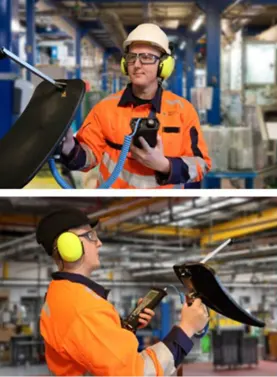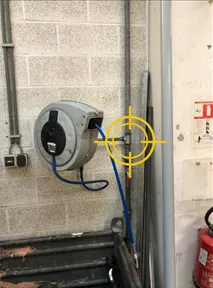
“We hear leaks, chasing them is useless”
It has become almost common to say that leak detection on a compressed air system can pay off! Who hasn’t seen those tags indicating the presence of a leak in a system? And then? Well, nothing… because of the lack of a proper action plan. For years, leaks have been detected and finally ignored, due to lack of time, energetic leadership and, above all, lack of communication between departments.
This task, properly executed, taking into account “detection and repair”, should be an absolute priority when we know that leaks “consume” 30 to 40% of the volume of air produced! Despite this alarming fact, which has been known and proven for years, many maintenance departments are burying their heads in the sand, hence the title of this article inspired by the Leonardo DI CAPRIO satirical film “Don’t look up”, in which the society prefers to ignore a scientifically proven large-scale problem rather than deal with it in depth. A planned leak localization strategy contributes directly to the reduction of the carbon footprint and allows considerable money savings. So why, you may ask, is this topic still relevant today? Why don’t things change easily in the field? I think the answer is directly linked to a lack of cohesion and communication between the different actors and departments: from the technician who detects, to the manager who quantifies, to the buyer who reports to management.
Florian BRIFFARD, EMERAUDE ANALYTIQUE, explains that the use of an ultrasonic detector is the most common way to locate a leak. Inexpensive, intuitive thanks to listening, simple to implement, this tool offers an excellent quality/price/performance ratio. His latest work proves it: in half a day, he brings to light 5 354€ of savings linked to compressed air leaks.
Locating leaks is good, but let’s not forget the final goal: repair. With this in mind, the digital age has allowed for the creation of both paid and free applications, such as LEAKReporter. They allow the reporting and estimation of the gains of a campaign, in order to measure its effectiveness.
Whether it is a service provider or a maintenance technician, the most important work to be done is not so much locating the leaks, but rather producing a clear report that allows the team in charge of fixing the leaks, which are a source of revenue loss, to take quick and effective action. The rest is a matter of repetition and communication:
- A compressed air network is often in use 24 hours a day. It is, therefore, essential to carry out several leak detections during the year in order to avoid a too rapid proliferation of leaks.
- The internal communication of the global gains realized, thanks to these “detection campaigns”, will help to valorize the service provider or the technician at the origin of the approach. A good internal communication allows other departments to become aware of the issue and to value the preventive contribution of the maintenance technician, who will no longer be seen as the fireman on duty who disrupts production, but as a source of savings and profit for the company.
In summary, the failure to implement an effective plan to reduce the energy costs associated with wasted compressed air is not the fault of technology. It offers effective solutions that are available to everyone, depending on their needs and budgets.
The real problem is, as is often the case, the willingness to implement a sustainable plan, including leak detection AND a documented worksheet. This is another story of culture, of belief, but, above all, of the means that we give ourselves to solve in the long term a problem and a reality known by all.
Benoît DEGRAEVE, General Sales Manager SDT Ultrasound Solutions

Florian BRIFFARD, service provider at EMERAUDE ANALYTIQUE

Targeted wide angle photo, taken by Florian BRIFFARD with the free application LEAKReporter



